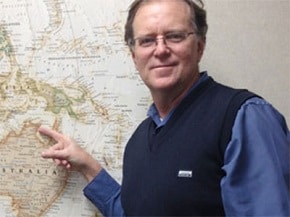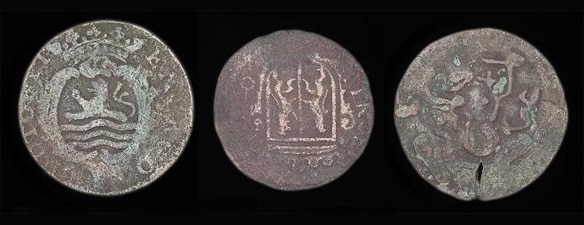Five copper coins and a nearly 70-year-old map with an “X” might lead to a discovery that could rewrite Australia’s history.
Australian scientist Ian McIntosh, currently Professor of Anthropology at Indiana University in the US, plans an expedition in July that has stirred up the archaeological community.
The scientist wants to revisit the location where five coins were found in the Northern Territory in 1944 that have proven to be 1000 years old, opening up the possibility that seafarers from distant countries might have landed in Australia much earlier than what is currently believed.
Back in 1944 during World War II, after Japanese bombers had attacked Darwin two years earlier, the Wessel Islands – an uninhabited group of islands off Australia’s north coast – had become a strategic position to help protect the mainland.
Australian soldier Maurie Isenberg was stationed on one of the islands to man a radar station and spent his spare time fishing on the idyllic beaches.
While sitting in the sand with his fishing-rod, he discovered a handful of coins in the sand.
He didn’t have a clue where they could come from but pocketed them anyway and later placed them in a tin.
In 1979 he rediscovered his “treasure” and decided to send the coins to a museum to get them identified.
The coins proved to be 1000 years old.

The discovery was apparently forgotten again until anthropologist McIntosh got the ball rolling a few months ago.
The coins raise many important questions:
How did 1000-year-old coins end up on a remote beach on an island off the northern coast of Australia?
Did explorers from distant lands arrive on Australian shores way before the James Cook declared it “terra nullius” and claimed it for the British throne in 1770?
We do know already that Captain Cook wasn’t the first white seafarer to step on Australia’s shores.
In 1606 a Dutch explorer named Willem Janszoon reached the Cape York peninsula in Queensland, closely followed a few years late by another Dutch seafarer Dirk Hartog.
And the Spaniard Luiz Vaez de Torres discovered the strait between Papua New Guinea and Australia, which was later named Torres Strait in his honour.
However, none of these explorers recognised that they had discovered the famed southern continent, the “terra australis incognita”, which was depicted as a counterweight to the known land masses of the northern hemisphere on many world maps of the day.
McIntosh and his team of Australian and American historians, archaeologists, geomorphologists and Aboriginal rangers say that the five coins date back to the 900s to 1300s.
They are African coins from the former Kilwa sultanate, now a World Heritage ruin on an island off Tanzania.
Kilwa once was a flourishing trade port with links to India in the 13th to 16th century.
The trade with gold, silver, pearls, perfumes, Arabian stone ware, Persian ceramics and Chinese porcelain made the city one of the most influential towns in East Africa at the time.
The copper coins were the first coins ever produced in sub-Saharan Africa and according to McIntosh have only twice been found outside Africa: once in Oman and Isenberg’s find in 1944.
The old coins might not be of monetary value, but for archaeologists they are priceless, says McIntosh.
Archaeologists have long suspected that there may have been early maritime trading routes that linked East Africa, Arabia, India and the Spice Islands even 1,000 years ago.
Or the coins could’ve washed ashore after a shipwreck.
When Isenberg discovered the copper coins he also found four coins that originated from the Dutch East India Company – with one dating back to 1690 raising memories of those early Dutch seafarers that stepped on Australian shores well before Cook.
McIntosh wants to answer some of these mysteries during his planned expedition to the Wessel Islands in July.
And it’s not only about revisiting the beach that was marked with an “X” on Isenberg’s map.
He will also be looking for a secret cave Aboriginal legends talk about.
This cave is supposed to be close to the beach where Isenberg once found the coins and is said to be filled with doubloons and weaponry of an ancient era.
Should McIntosh and his team find what they are looking for, the find might not only be priceless treasure, but relics that could rewrite Australian history.


